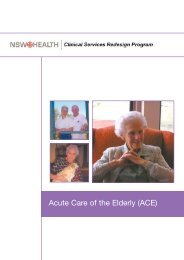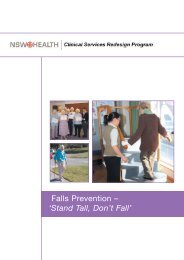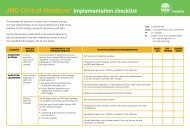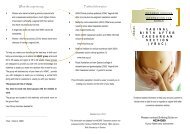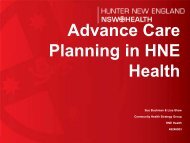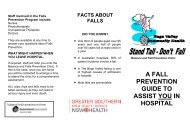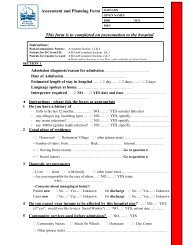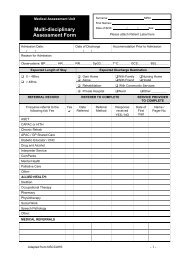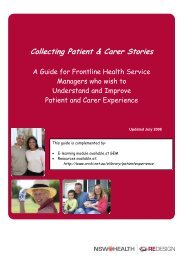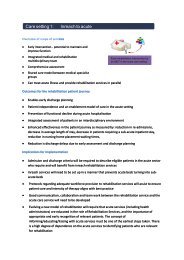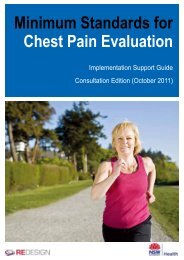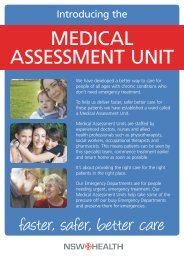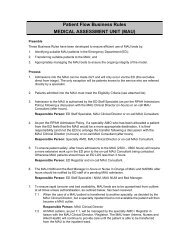A review of literature, 2006 ( pdf - 438 KB) - ARCHI
A review of literature, 2006 ( pdf - 438 KB) - ARCHI
A review of literature, 2006 ( pdf - 438 KB) - ARCHI
Create successful ePaper yourself
Turn your PDF publications into a flip-book with our unique Google optimized e-Paper software.
Macedonian Women’s Health Project<br />
Review <strong>of</strong> <strong>literature</strong><br />
___________________________________________________________________<br />
also prepare an evening meal for the whole family to share when parents arrive to<br />
pick the children up. Although some <strong>of</strong> the Macedonian grandmothers interviewed<br />
reported having less time for themselves, all <strong>of</strong> the grandmothers also reported a<br />
range <strong>of</strong> positive health gains such as increased physical fitness and improved<br />
mental and emotional well being.<br />
Socio-economic disadvantage<br />
The demographic pr<strong>of</strong>ile <strong>of</strong> Macedonian women provided earlier in this <strong>review</strong><br />
indicated that, compared with the general population, Macedonian women are more<br />
likely to have lower levels <strong>of</strong> education and work in occupations attracting much<br />
lower pay rates.<br />
Women who are newly arrived from Macedonia are particularly disadvantaged. Their<br />
lack <strong>of</strong> English skills may hinder them in obtaining employment, housing and medical<br />
care. Unfortunately many <strong>of</strong> these women with children may not be able to attend<br />
English classes if childcare is not provided. These factors may contribute to financial<br />
problems, especially when new arrivals must wait two years before they are eligible<br />
for income support (Macedonian Australian Welfare Association 2005).<br />
Like other women from culturally and linguistically diverse backgrounds, most<br />
Macedonian women also work in the occupations and industries which have the<br />
highest rates <strong>of</strong> occupational injury and diseases (Multicultural Health Unit WSAHS<br />
n.d.).<br />
There is strong and consistent evidence, that those in the community who experience<br />
social and/or economic disadvantage are more likely to have poor health than those<br />
with more advantages (Marmot 2001).<br />
- 20 -



